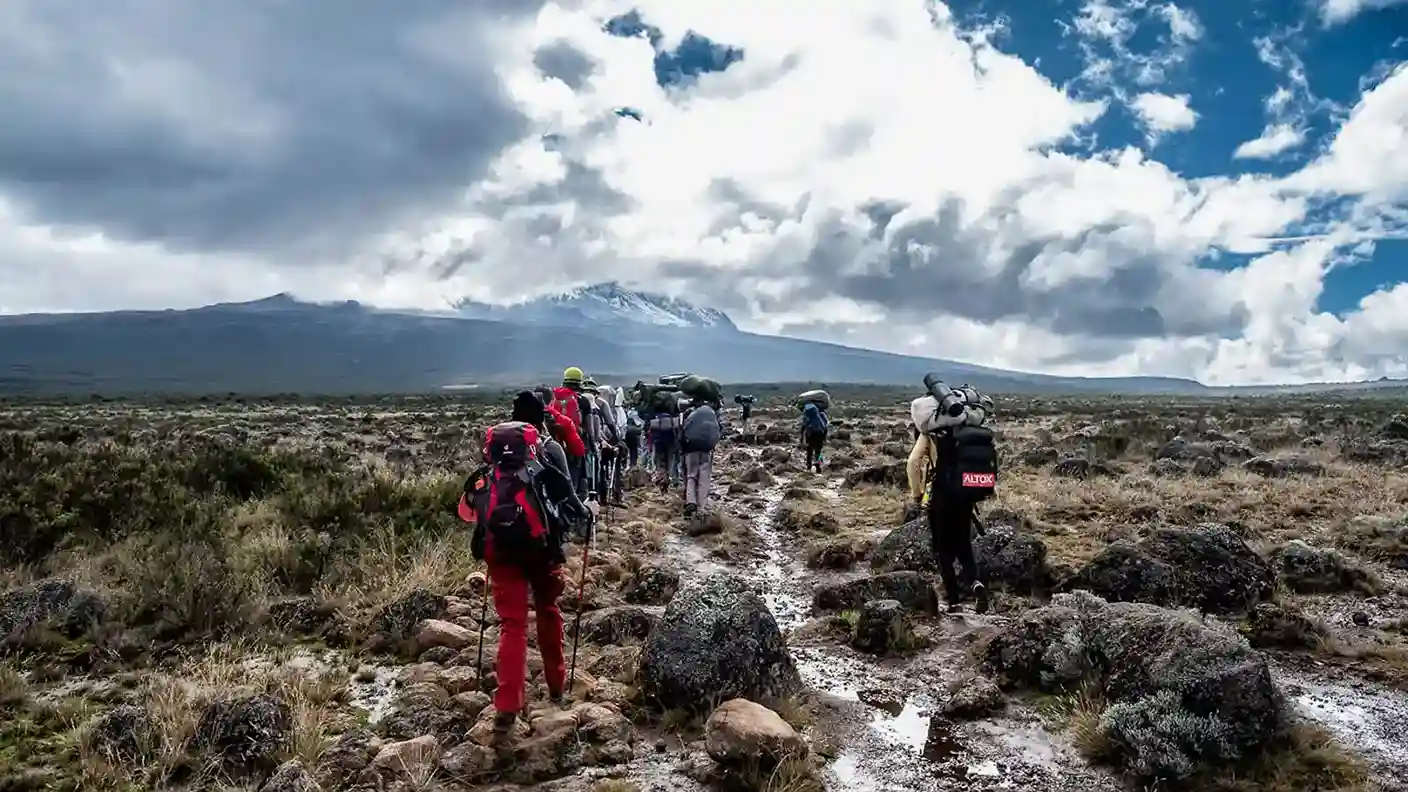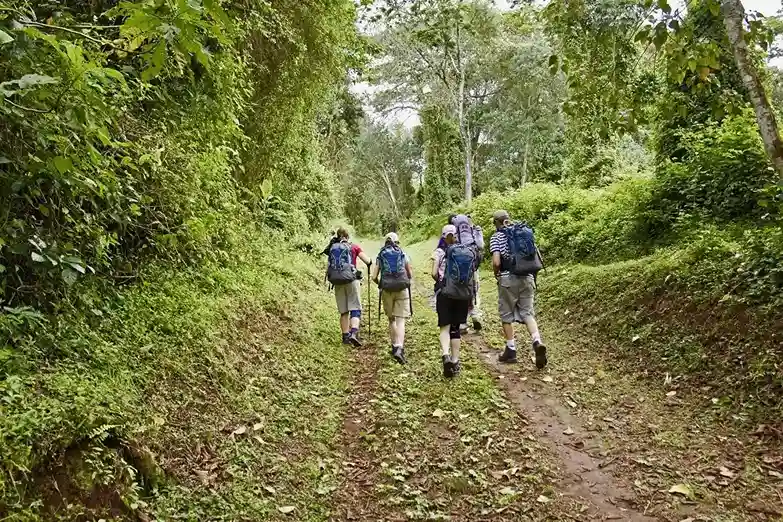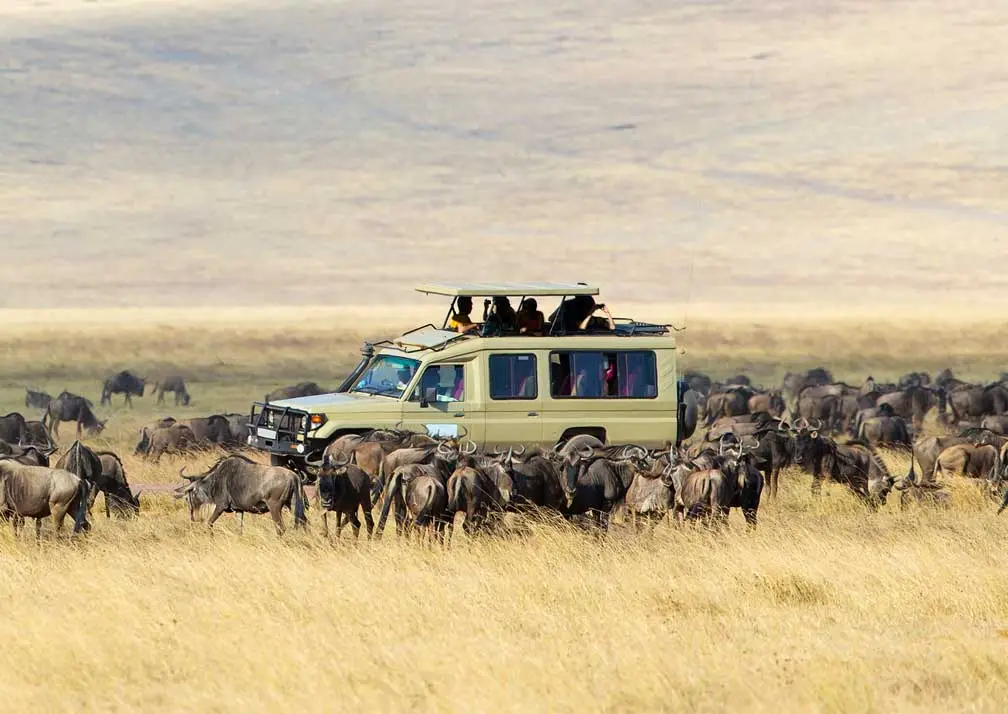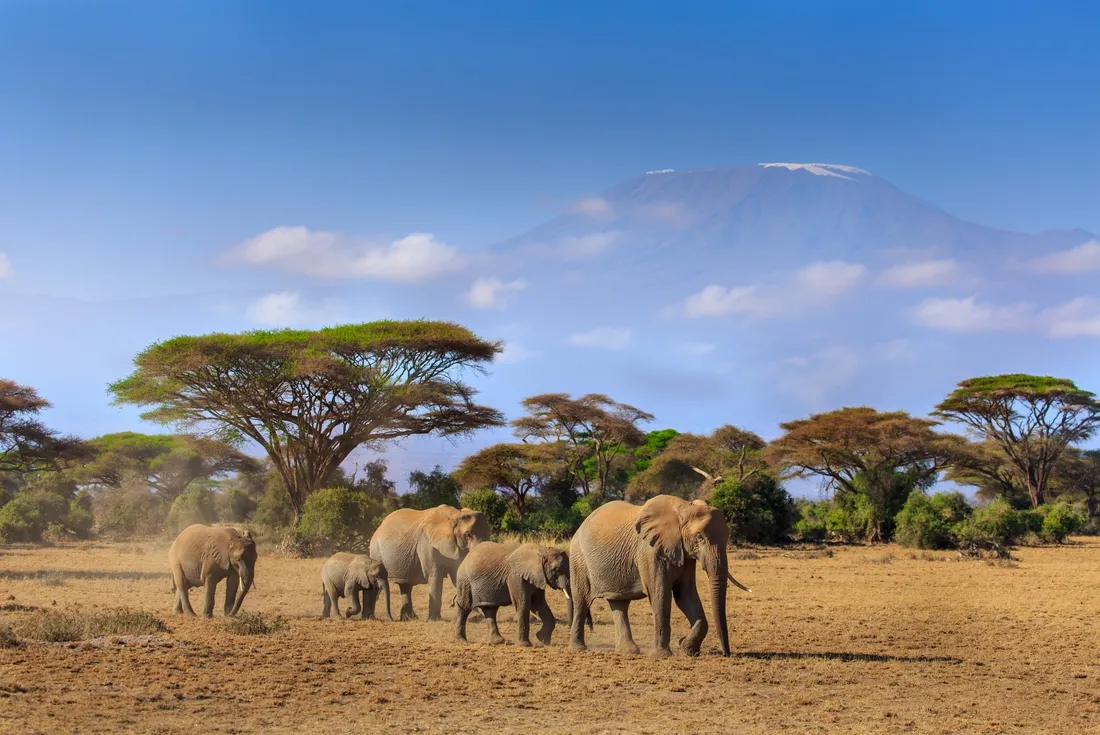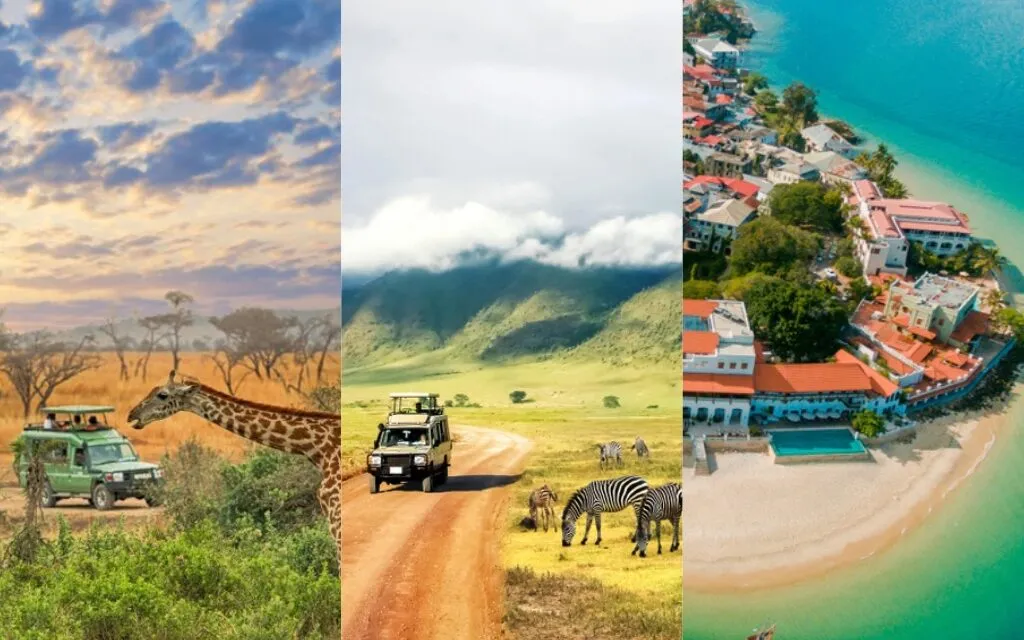Kilimanjaro Climb via Marangu Route – 5–6 Day Trek Packages
Experience a thrilling Kilimanjaro climb via Marangu Route with Capable Africa Tours. Known as the “Coca-Cola Route,” this beginner-friendly Marangu Route tour Tanzania offers cozy Marangu Route huts accommodation and a high Marangu Route success rate to summit Uhuru Peak in Kilimanjaro National Park Tanzania trek, a UNESCO World Heritage Site. Our 5–6 day Kilimanjaro Marangu Route packages include professional mountain guides Tanzania, comprehensive Kilimanjaro climbing safety tips, and stunning views from rainforest to alpine desert. Discover the best time to climb Kilimanjaro Marangu Route, detailed itineraries, and Marangu Route climb cost to plan your Kilimanjaro adventure holidays Tanzania!
Book Your Marangu Route Trek NowMarangu Route Highlights for Kilimanjaro Trekking
- Duration: Kilimanjaro Marangu Route 5 days or 6 days with acclimatization
- Destination: Mount Kilimanjaro Marangu Route, Uhuru Peak (5,895m)
- Main Focus: Summit Uhuru Peak via Marangu Route, scenic trails, hut stays
- Tour Style: Guided Kilimanjaro climbs Marangu, small groups (2–12)
- Best Time: January–March, June–October for optimal Kilimanjaro trekking Marangu
- Ideal For: Beginners, adventure seekers, Kilimanjaro climbing experience enthusiasts
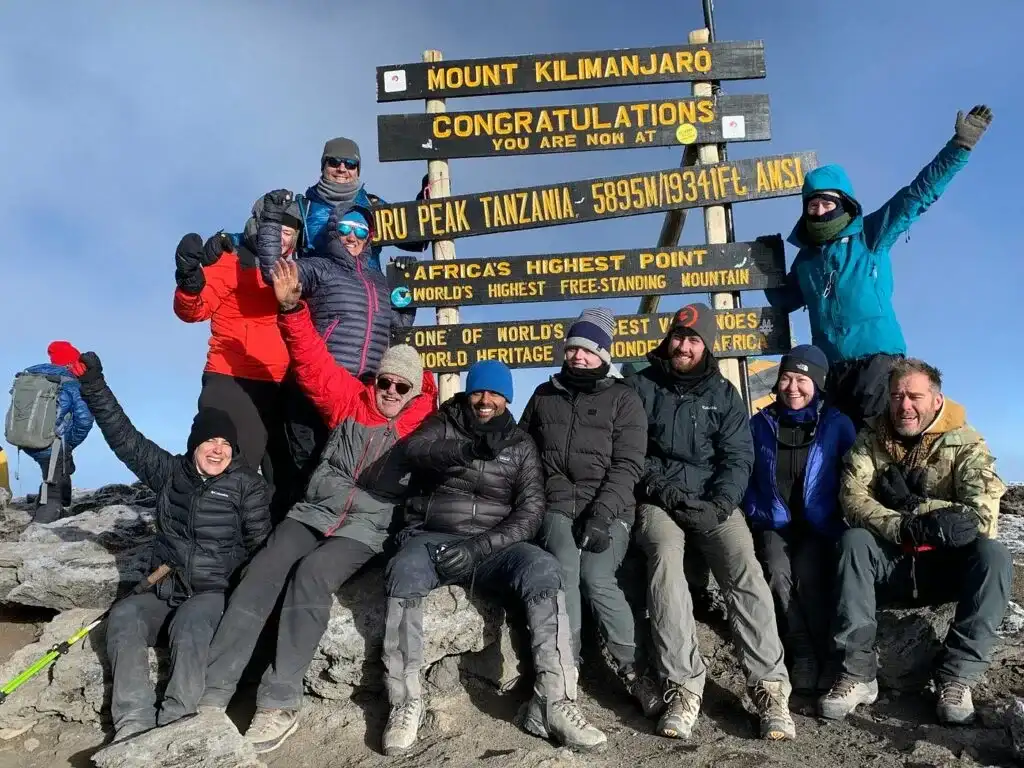
Introduction to Kilimanjaro Marangu Route
The Kilimanjaro Marangu Route, fondly called the “Coca-Cola Route,” is the only Mount Kilimanjaro trekking route offering Marangu Route huts accommodation, making it perfect for a Kilimanjaro climbing experience for beginners. This 5–6 day Marangu Route Kilimanjaro climb package ascends Africa’s highest peak at 5,895m through diverse landscapes, from lush rainforests to stark alpine deserts, culminating at summit Uhuru Peak via Marangu Route. Located in Tanzania’s Kilimanjaro National Park, a Mount Kilimanjaro World Heritage Site, the route boasts a Marangu Route success rate of 70–80% with proper acclimatization days Marangu Route.
Capable Africa Tours offers expertly crafted Kilimanjaro climb packages Tanzania, including professional mountain guides Tanzania, porters and guides on Kilimanjaro, and eco-friendly Kilimanjaro climbing practices. Whether you’re new to trekking or seeking a Kilimanjaro adventure holidays Tanzania, the Marangu Route tour Tanzania delivers an unforgettable journey.
Why Choose the Kilimanjaro Climb Marangu Route
The Kilimanjaro climb Marangu Route is renowned for its accessibility, making it a top choice among Mount Kilimanjaro trekking routes comparison. Unlike camping-based routes, Marangu Route huts accommodation provides comfort, ideal for a Kilimanjaro climbing experience for beginners. The gradual ascent and optional acclimatization days Marangu Route ensure a high Marangu Route success rate (70–80%) for summiting Uhuru Peak. This Marangu Route tour Tanzania offers stunning views and a structured Kilimanjaro climb itinerary Marangu Route for a safe, enjoyable trek.
With Capable Africa Tours, your guided Kilimanjaro climbs Marangu include professional mountain guides Tanzania, comprehensive Kilimanjaro climbing safety tips, and eco-friendly practices supporting Kilimanjaro National Park Tanzania trek. Combine your Kilimanjaro trekking Marangu with a safari for a complete Kilimanjaro adventure holidays Tanzania!
Kilimanjaro Climb Itinerary: Marangu Route
Our Kilimanjaro climb itinerary Marangu Route is designed for safety and a high Marangu Route success rate. Below is a 6-day Kilimanjaro Marangu Route itinerary, including acclimatization days Marangu Route to minimize altitude sickness precautions.
- Day 1: Marangu Gate to Mandara Hut (2,700m): Trek 8km through rainforest, 3–4 hours, overnight in Marangu Route huts accommodation.
- Day 2: Mandara Hut to Horombo Hut (3,720m): Trek 12km through moorland, 5–6 hours, stay in Mount Kilimanjaro Marangu Route huts.
- Day 3: Acclimatization Day at Horombo Hut: Short hikes for altitude adjustment, overnight in Marangu Route huts accommodation.
- Day 4: Horombo Hut to Kibo Hut (4,700m): Trek 10km through alpine desert, 5–6 hours, rest in Kilimanjaro trekking Marangu huts.
- Day 5: Kibo Hut to Uhuru Peak (5,895m) to Horombo Hut: Summit Uhuru Peak via Marangu Route (6km, 6–8 hours), descend 16km, overnight in huts.
- Day 6: Horombo Hut to Marangu Gate: Descend 20km through rainforest, 5–7 hours, transfer to Moshi/Arusha.
The Kilimanjaro Marangu Route 5 days itinerary skips acclimatization, suitable for experienced trekkers. Contact us to customize your Kilimanjaro trekking tours Tanzania.
What’s Included in Marangu Route Kilimanjaro Climb Packages
Our Kilimanjaro climb packages Tanzania via Marangu Route ensure a seamless Kilimanjaro trekking Marangu adventure. Here’s a breakdown of inclusions and exclusions:
Inclusions
- Transfers from Moshi or Arusha for Kilimanjaro Marangu Route
- Professional mountain guides Tanzania and porters and guides on Kilimanjaro
- Kilimanjaro climb permits and Kilimanjaro park fees Marangu Route
- Marangu Route huts accommodation with mattresses
- Full-board meals during Kilimanjaro climb Marangu Route
- Safety equipment (oxygen tanks, first aid) for Kilimanjaro climbing safety tips
- Bottled water and daily briefings
Exclusions
- International flights to Tanzania
- Travel or medical insurance
- Tips for porters and guides on Kilimanjaro ($10–20 pp/day, optional)
- Trekking equipment for Kilimanjaro (available for rent)
- Personal expenses or alcoholic beverages
Best Time to Climb Kilimanjaro Marangu Route
The best time to climb Kilimanjaro Marangu Route is during the dry seasons: January–March and June–October. These months offer clear skies, stable weather, and optimal trails for a safe summit Uhuru Peak via Marangu Route. Wet seasons (April–May, November) bring rain but fewer crowds, ideal for experienced trekkers. For combined Kilimanjaro trekking tours Tanzania with safaris, the dry season aligns perfectly for a comprehensive Kilimanjaro adventure holidays Tanzania.
Marangu Route Huts Accommodation
The Kilimanjaro climb Marangu Route is unique for its Marangu Route huts accommodation, offering shelter and comfort. Key huts include:
- Mandara Hut (2,700m): Cozy dorms in the rainforest, ideal for Kilimanjaro trekking Marangu.
- Horombo Hut (3,720m): Spacious Mount Kilimanjaro Marangu Route huts, used for acclimatization days Marangu Route.
- Kibo Hut (4,700m): Basic shelter before summit Uhuru Peak via Marangu Route.
These huts ensure a comfortable Kilimanjaro climbing experience for beginners, with Capable Africa Tours maintaining clean, safe facilities.
Marangu Route Difficulty Level
The Marangu Route difficulty level is moderate, making the Kilimanjaro climb Marangu Route ideal for beginners with decent fitness. Its gradual ascent and Marangu Route huts accommodation ease the trek, but altitude sickness precautions are critical at 5,895m. Daily treks (3–8 hours) culminate in a demanding summit day (12–15 hours). Our professional mountain guides Tanzania provide Kilimanjaro climbing safety tips, ensuring a secure Kilimanjaro trekking Marangu experience.
Kilimanjaro Climb Packing List
Proper trekking equipment for Kilimanjaro is essential for a successful Kilimanjaro climb Marangu Route. Here’s a Kilimanjaro climb packing list:
- Clothing: Layered outfits, fleece, waterproof jacket, warm hat, gloves for Kilimanjaro trekking Marangu.
- Footwear: Sturdy hiking boots, gaiters, warm socks for Mount Kilimanjaro Marangu Route.
- Gear: Sleeping bag (–10°C), trekking poles, headlamp for summit Uhuru Peak via Marangu Route.
- Accessories: Sunglasses, SPF 50+ sunscreen, 2L water bottle for altitude sickness precautions.
- Personal Items: First aid kit, snacks, medications for Kilimanjaro climbing safety tips.
Rental trekking equipment for Kilimanjaro is available through Capable Africa Tours for a hassle-free Marangu Route tour Tanzania.
Kilimanjaro Climbing Safety Tips
Safety is critical for a Kilimanjaro climb Marangu Route. Follow these Kilimanjaro climbing safety tips:
- Acclimatize Properly: Choose Kilimanjaro Marangu Route 6 days for acclimatization days Marangu Route to reduce altitude sickness risks.
- Stay Hydrated: Drink 3–4 liters daily for altitude sickness precautions.
- Follow Guides: Adhere to professional mountain guides Tanzania for safe Kilimanjaro trekking Marangu.
- Monitor Symptoms: Report headaches or nausea for early intervention during Kilimanjaro climb Marangu Route.
- Pack Warm: Layer up for freezing nights on Mount Kilimanjaro Marangu Route.
Marangu Route Climb Cost
The Marangu Route climb cost ranges from $1,800–$3,500 per person, depending on duration, group size, and inclusions. Here’s a breakdown for Kilimanjaro climb packages Tanzania:
- Budget Climb: $1,800–$2,200 (group treks, shared Marangu Route huts accommodation).
- Mid-Range Climb: $2,200–$2,800 (smaller groups, extra services).
- Luxury Climb: $2,800–$3,500 (private guided Kilimanjaro climbs Marangu).
Kilimanjaro park fees Marangu Route and porters and guides on Kilimanjaro are included. Contact us for a tailored Marangu Route Kilimanjaro climb package!
Kilimanjaro Marangu Route Gallery
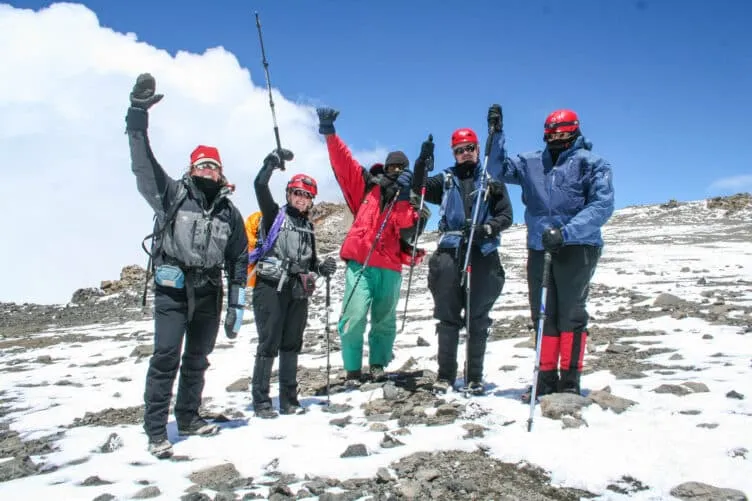
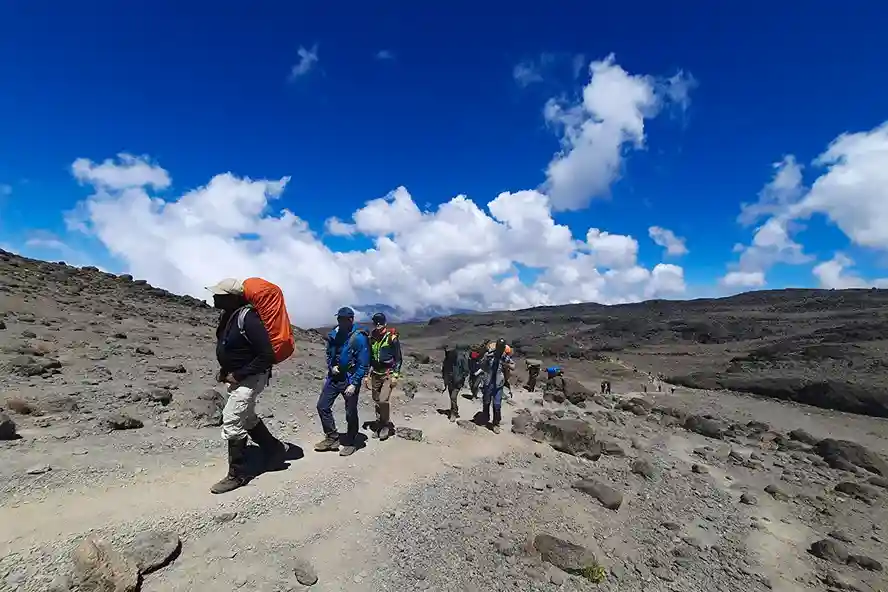
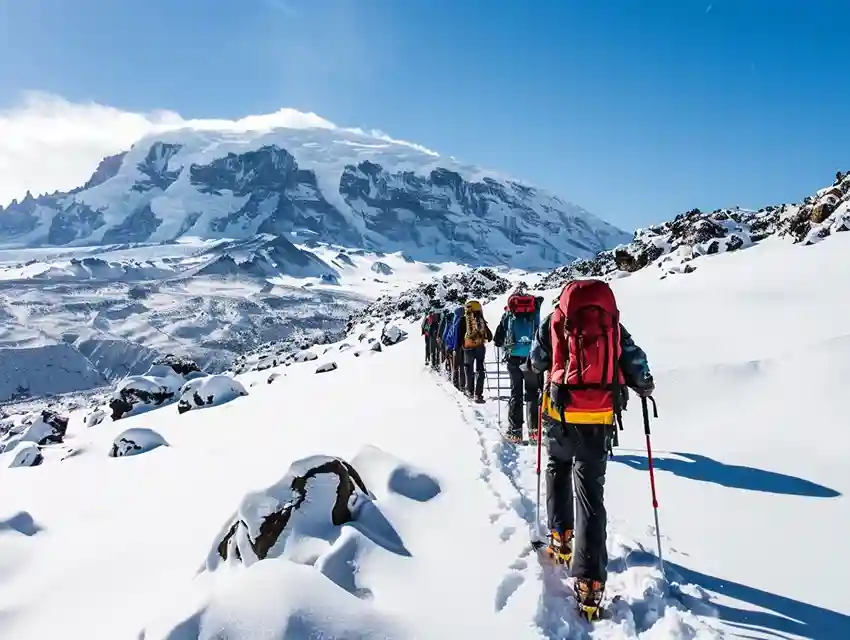
Experience the Kilimanjaro Marangu Route Adventure
Discover the beauty of a Kilimanjaro climb Marangu Route, from lush rainforests to the iconic summit Uhuru Peak via Marangu Route in Kilimanjaro National Park Tanzania trek.
Why Book Your Kilimanjaro Climb Marangu Route with Us
Capable Africa Tours offers unmatched expertise for your Kilimanjaro climb via Marangu Route, ensuring a memorable Marangu Route tour Tanzania. Our benefits include:
- 70–80% Marangu Route success rate with professional mountain guides Tanzania.
- Customizable Kilimanjaro Marangu Route 5 days or 6 days itineraries.
- Eco-friendly Kilimanjaro climbing supporting Kilimanjaro National Park Tanzania trek.
- Small groups for personalized Kilimanjaro trekking tours Tanzania.
- 24/7 support and seamless logistics for Kilimanjaro adventure holidays Tanzania.
Book now for a safe, unforgettable Kilimanjaro climb Marangu Route!
Mount Kilimanjaro Trekking Routes Comparison
The Kilimanjaro Marangu Route is one of seven routes, each unique in Mount Kilimanjaro trekking routes comparison. Here’s how it stacks up:
- Kilimanjaro Marangu Route: 5–6 days, Marangu Route huts accommodation, beginner-friendly, 70–80% success rate.
- Machame Route: 6–7 days, camping, scenic, moderately challenging.
- Lemosho Route: 7–8 days, camping, remote, high success rate.
- Rongai Route: 6–7 days, camping, quieter, ideal for wet season.
The Kilimanjaro climb Marangu Route offers comfort and efficiency for a Kilimanjaro climbing experience for beginners.
Ready for Your Kilimanjaro Marangu Route Adventure?
Join Capable Africa Tours for an unforgettable Kilimanjaro climb via Marangu Route. Summit Uhuru Peak via Marangu Route with guided Kilimanjaro climbs Marangu, cozy Marangu Route huts accommodation, and a high Marangu Route success rate in Kilimanjaro National Park Tanzania trek.
- 70–80% Marangu Route success rate with acclimatization days
- Professional mountain guides Tanzania for safety
- Eco-friendly Kilimanjaro climbing practices
- Comfortable Marangu Route huts accommodation
- Supports porters and guides on Kilimanjaro and conservation
Limited spots for exclusive Kilimanjaro climb packages Tanzania—book your Marangu Route tour Tanzania now!
Book Your Marangu Route Trek Now
